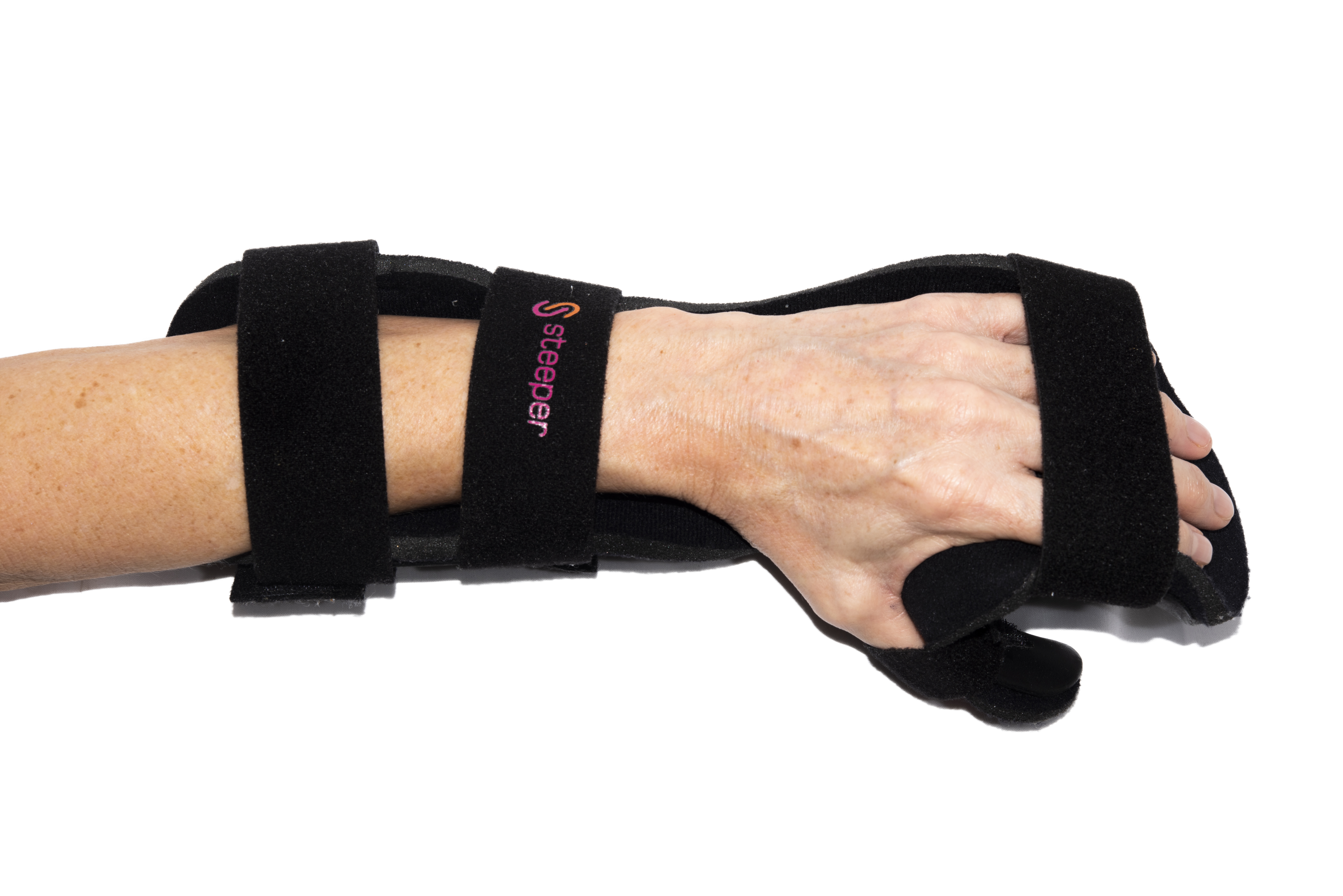Splinting for patients with neurological injury
Information for patients from Occupational Therapy
How to put a splint on: ______________________________________________________
How to take a splint off: _____________________________________________________
Date splint applied / made: __________________________________________________
Next review of splint: _______________________________________________________
Contact person: ___________________________________________________________
Contact number: ___________________________________________________________

What is a splint?
A splint is a device used to help to stretch muscles which have become tight. They are made specially to fit you. They may need to be adjusted over time by your therapist to increase the stretch.
In this leaflet the term splint will be used to refer to fibreglass casts, thermoplastic, and prefabricated splints.
Why do I need a splint?
The splint keeps your limb / joints and muscles in the best position, to help the management of your limb (arm or leg).
You can also use the splint to help you carry out certain everyday activities, such as gardening or shopping.
How do I look after my splint?
Keep your splint away from direct heat (such as radiators and open fires) at all times.
Spot clean your splint with warm water and a mild detergent (like washing up liquid), as needed.
Other than spot cleaning, do not get your splint wet. It is not waterproof and will fall apart.
How long should I wear my splint for?
It may be necessary to wear your splint for several hours a day. This will keep your limb in the best position to heal, or for when you are doing certain physical everyday activities, such as gardening or cooking. It is very important to follow this guidance to get the most out of your splint.
If you have any questions or concerns about your splint, please speak to your occupational therapist or physiotherapist. Otherwise follow your wearing programme, as outlined on the front page of this leaflet.
Following this programme will make sure your muscles receive an adequate stretch.
What possible problems might I have with my splint?
Check your splinted arm or leg:
every hour for the first few days, and
regularly after this period for any of the following problems.
| Problem | Possible cause | What should I do? |
|---|---|---|
| Continued skin irritation or red areas around your splint | Badly fitted splint | Remove your splint |
| Poor sensation | Contact your therapist if you cannot get your splint to fit correctly | |
| Swelling | Splint is fastened too tightly | Loosen the straps |
| Poor positioning of your limb (arm or leg) | Review the instructions on how to apply your splint. Contact your therapist if you cannot get your splint to fit correctly | |
| Pain | Splint or straps have been applied wrong | Loosen the straps |
| Review your splint wearing programme (see front of this leaflet) | ||
| Contact your therapist it you cannot get your splint to fit correctly |
If any of the above problems occur, and do not improve after you have made the suggested adjustments, please remove your splint immediately and contact your therapist in the hospital or community, for advice. If you are on the ward, then please speak to one of the nurses.